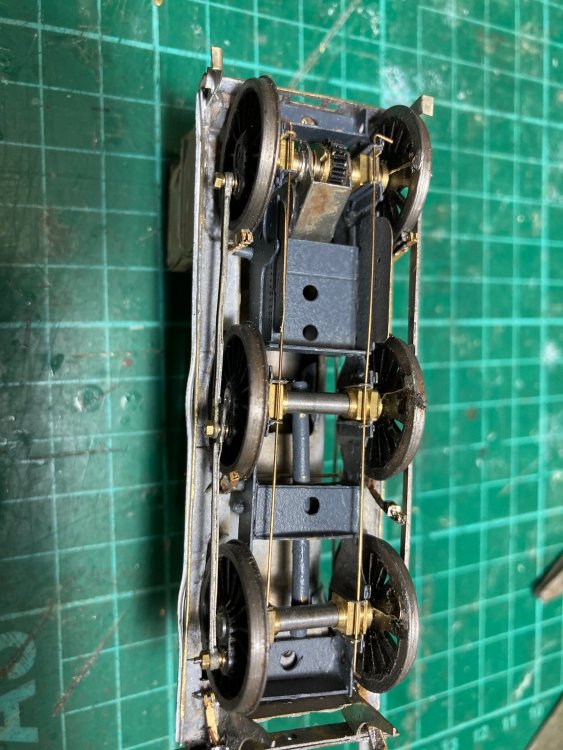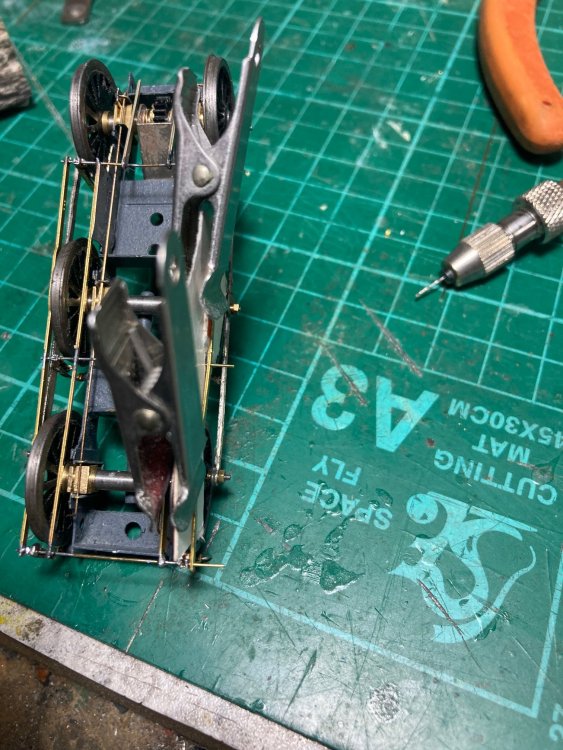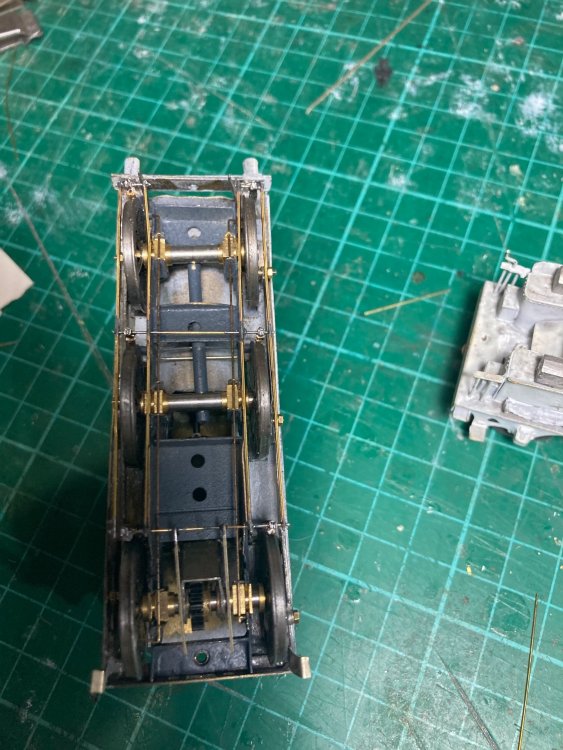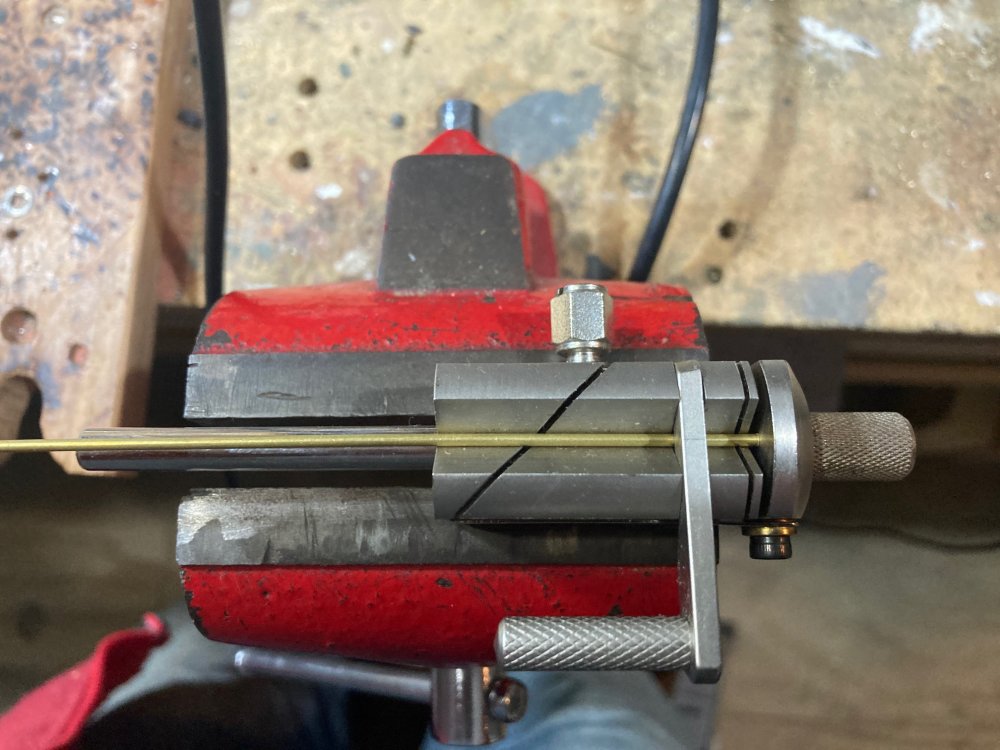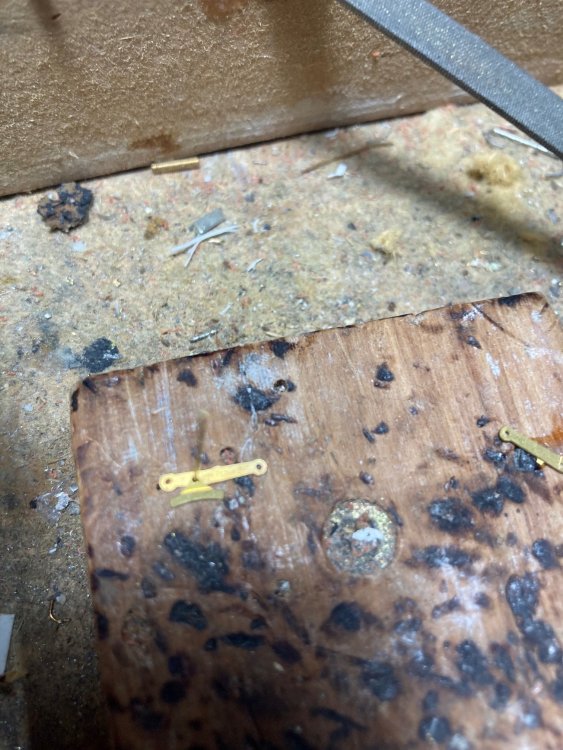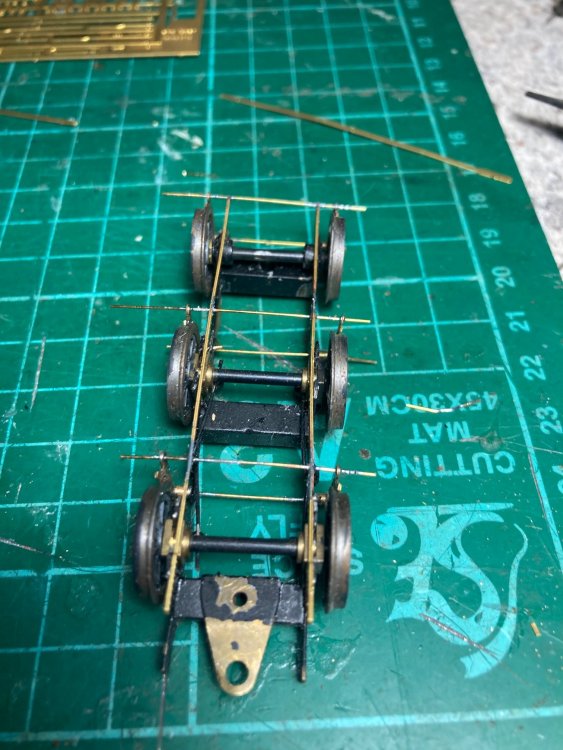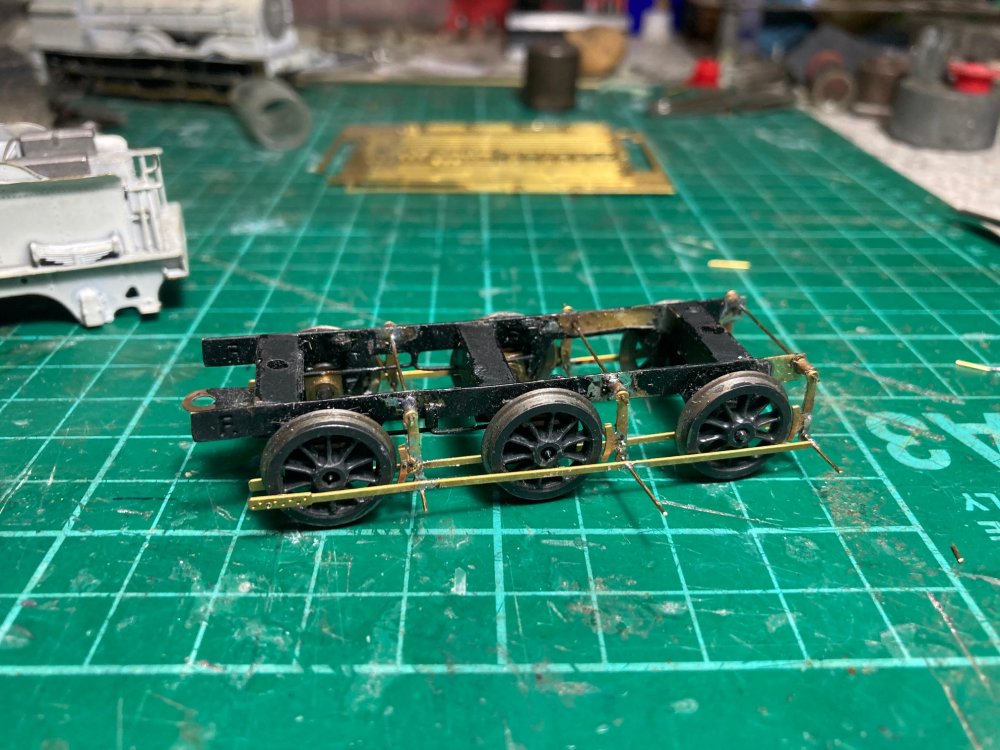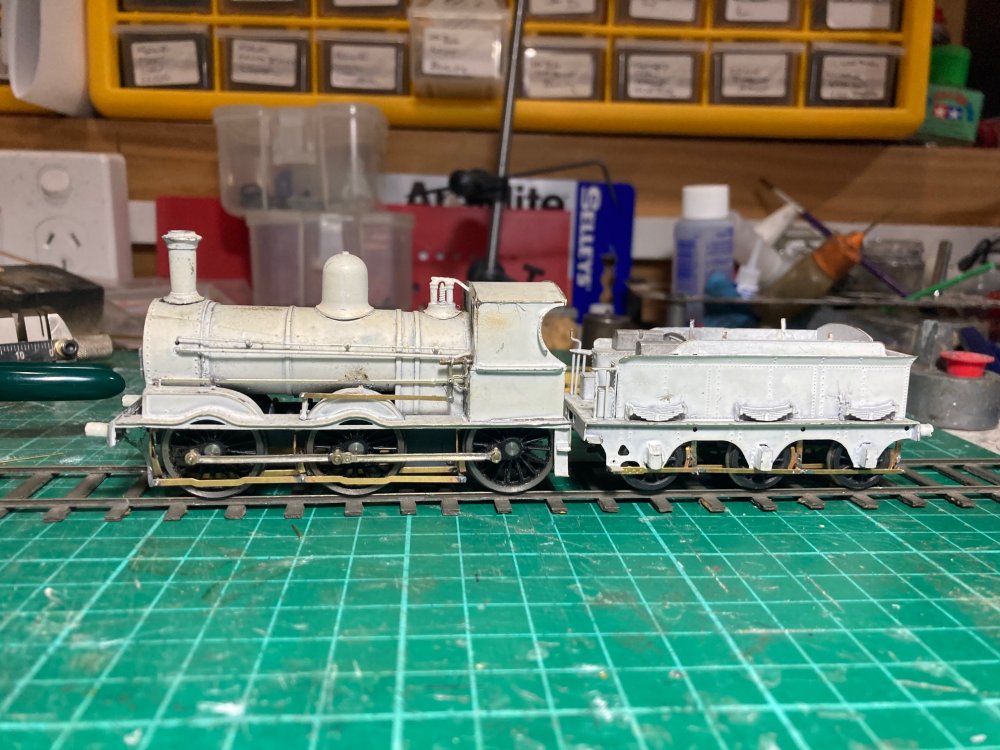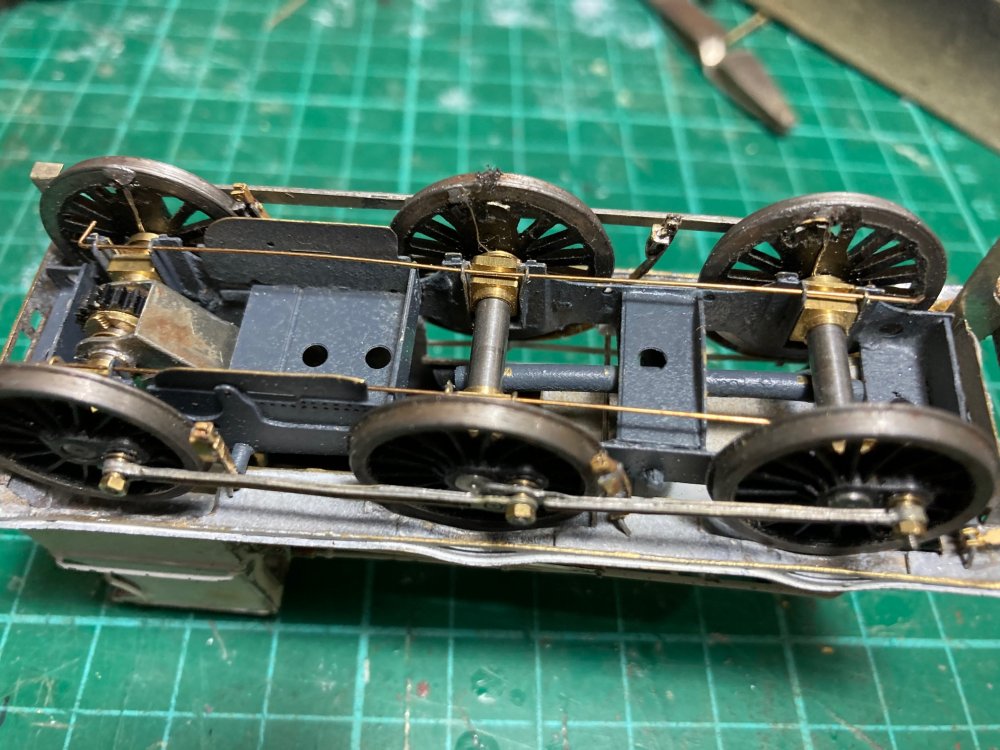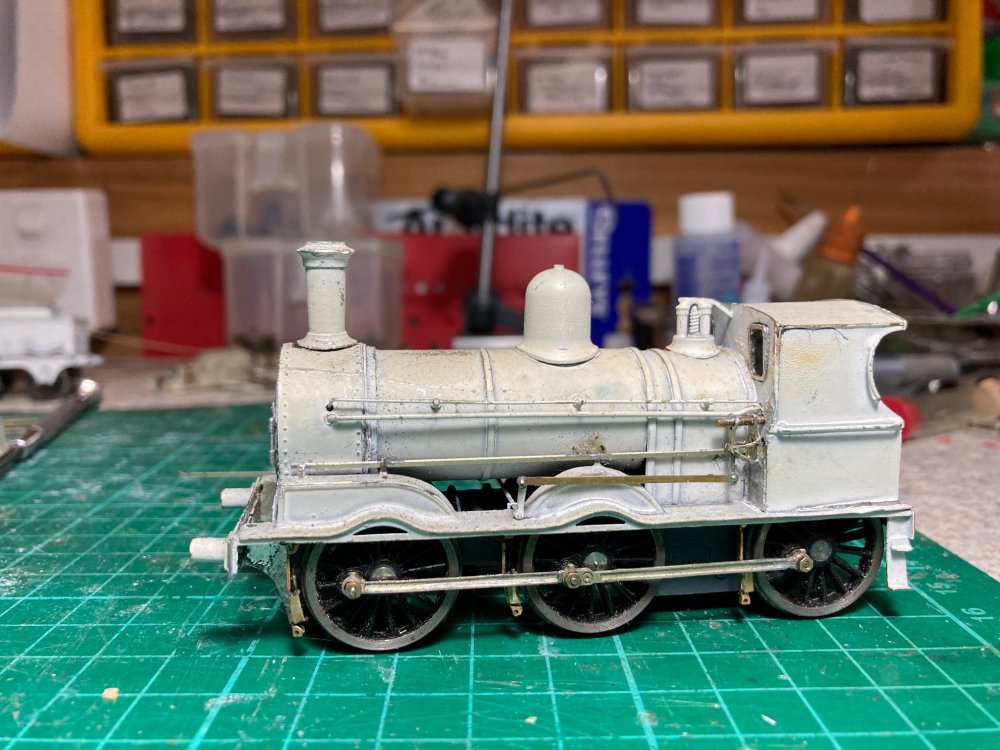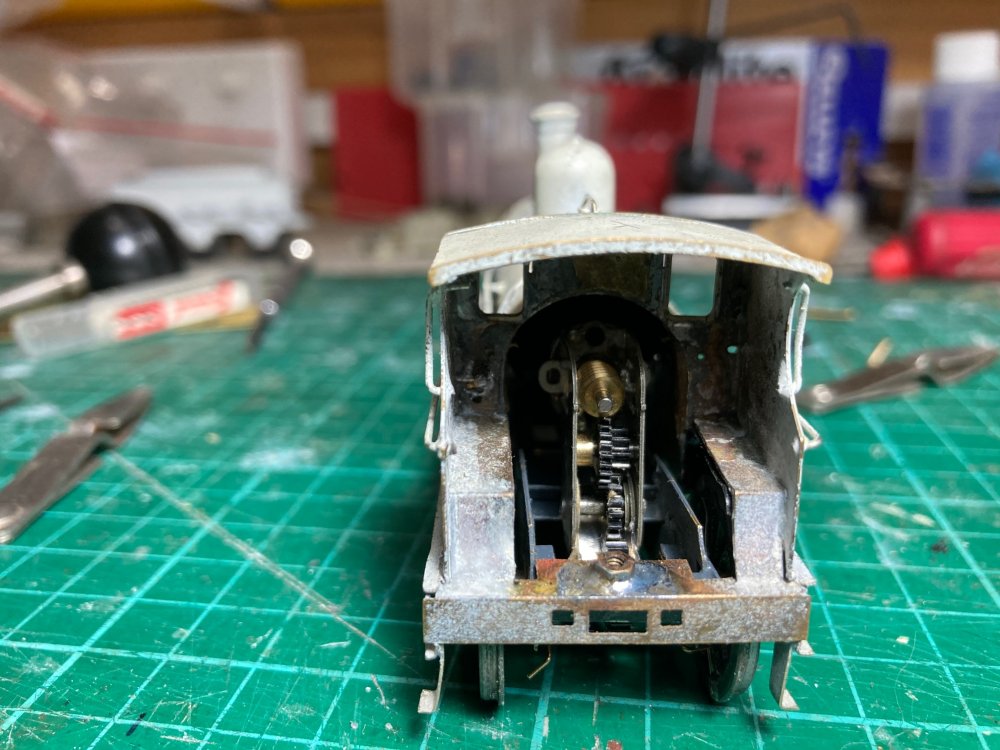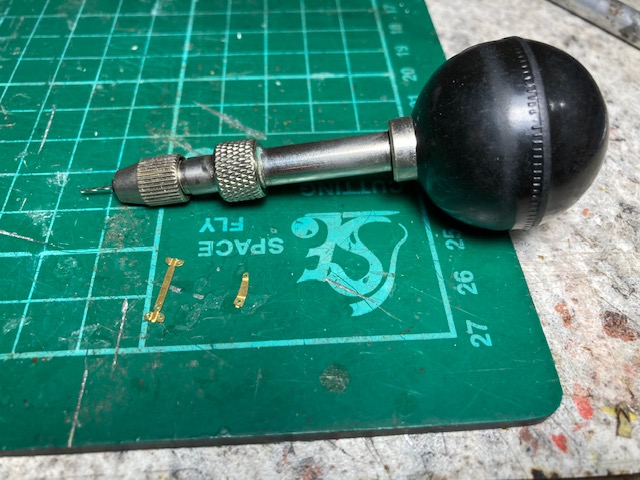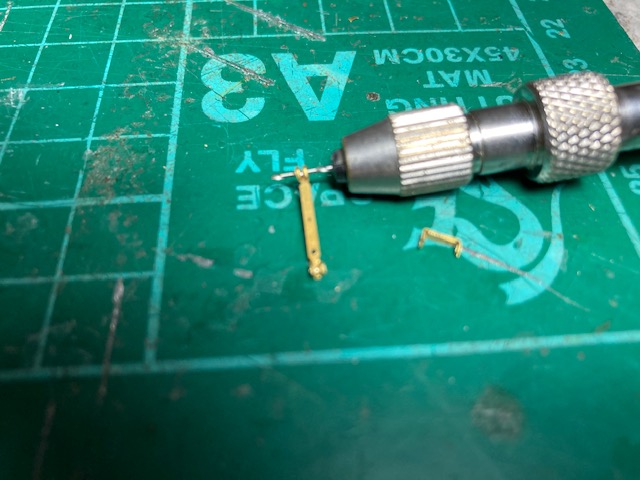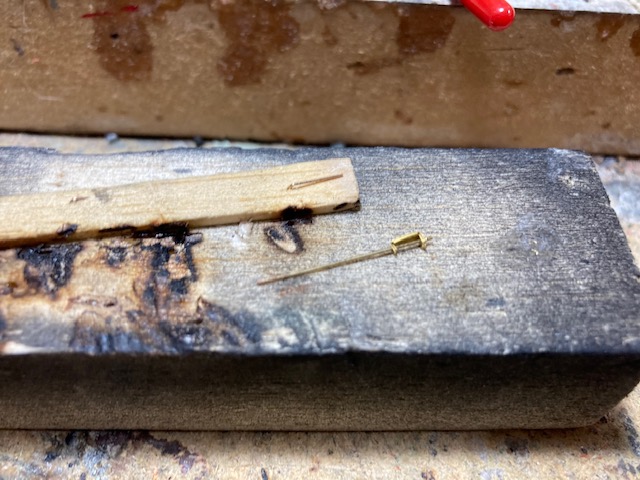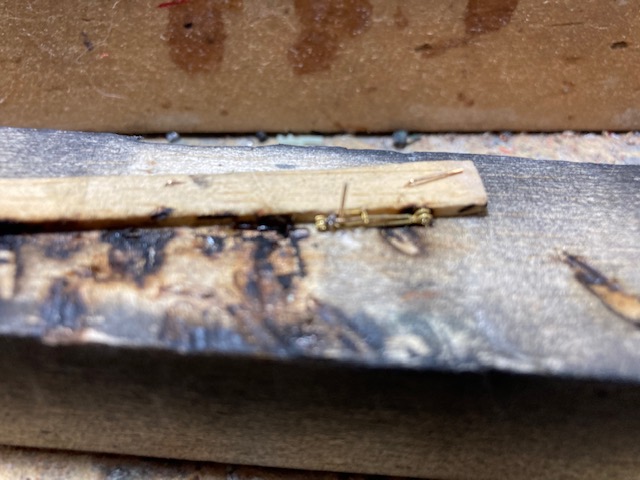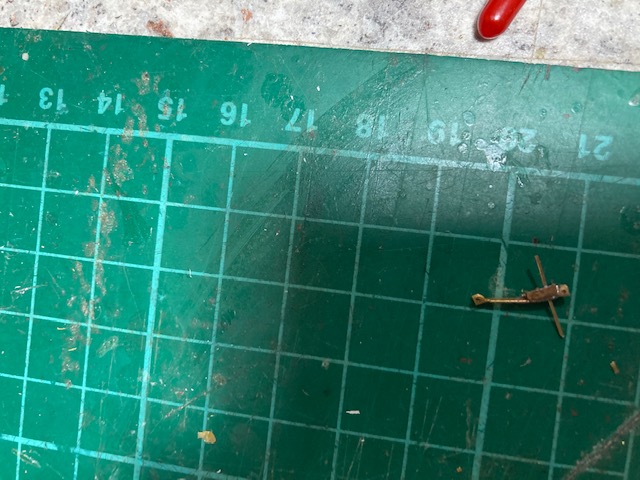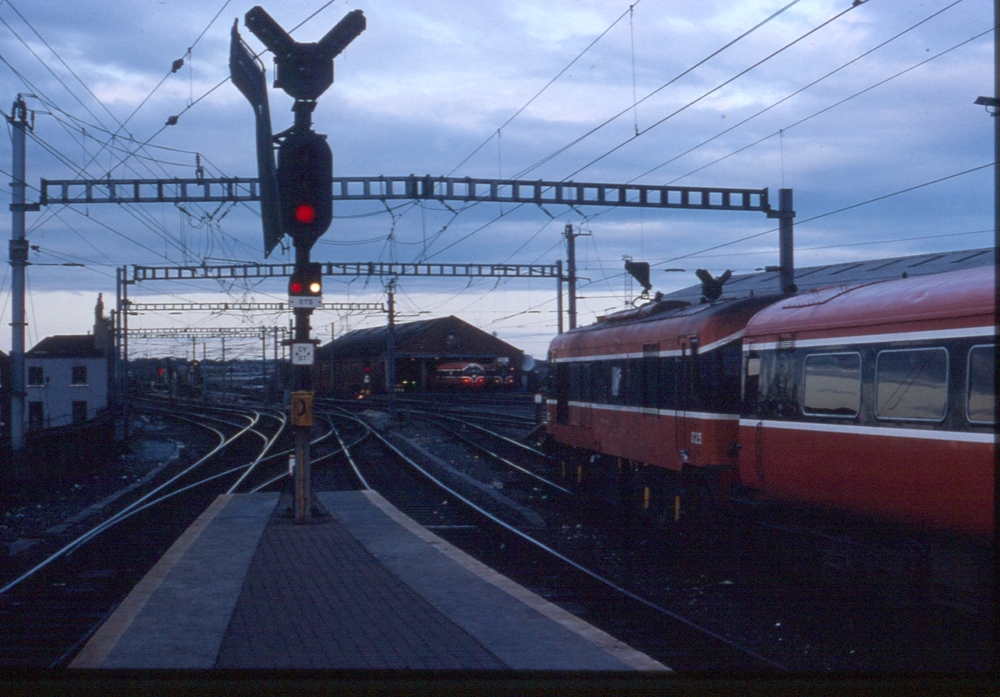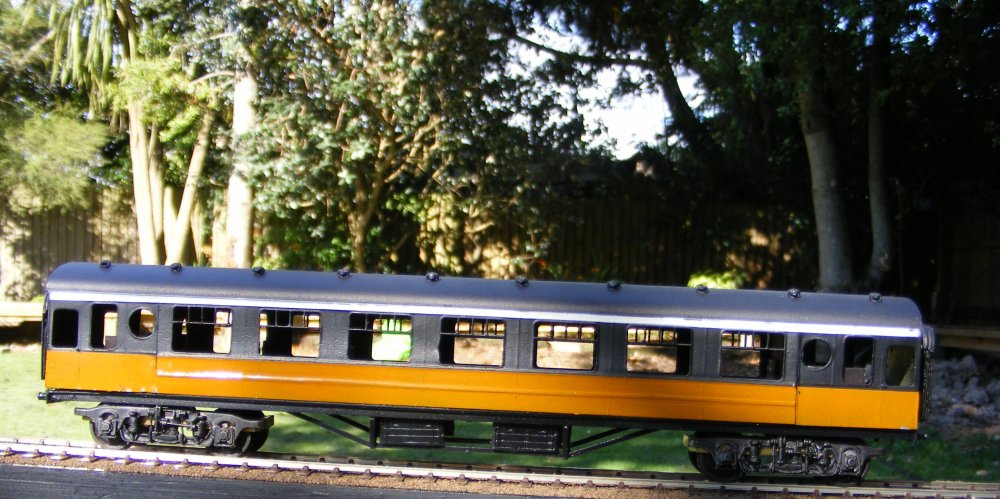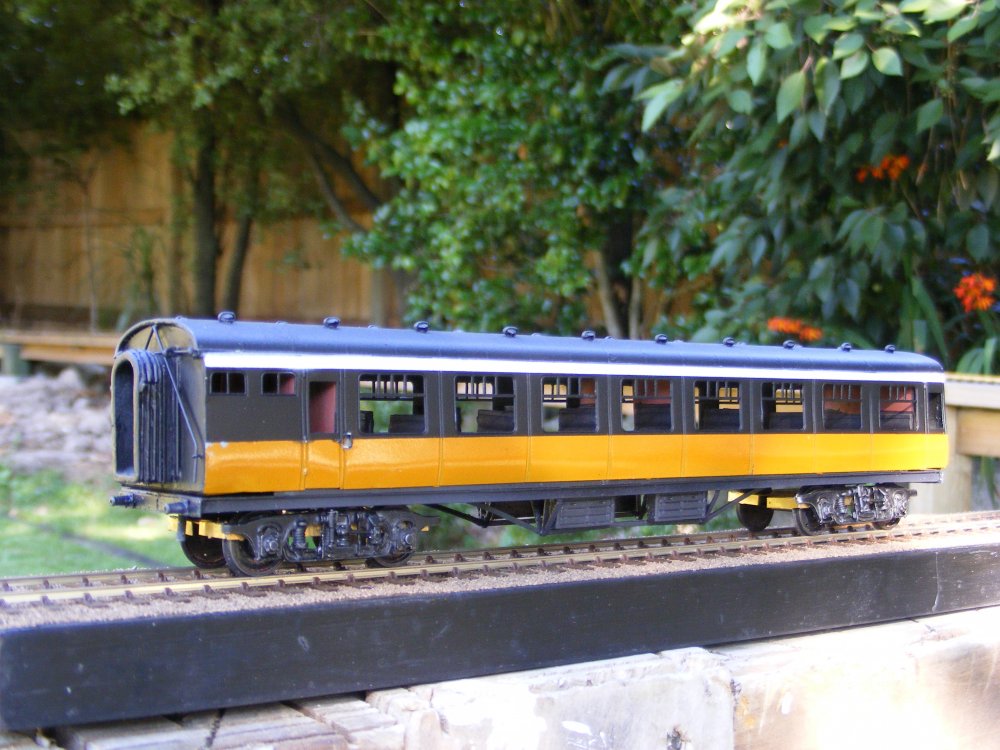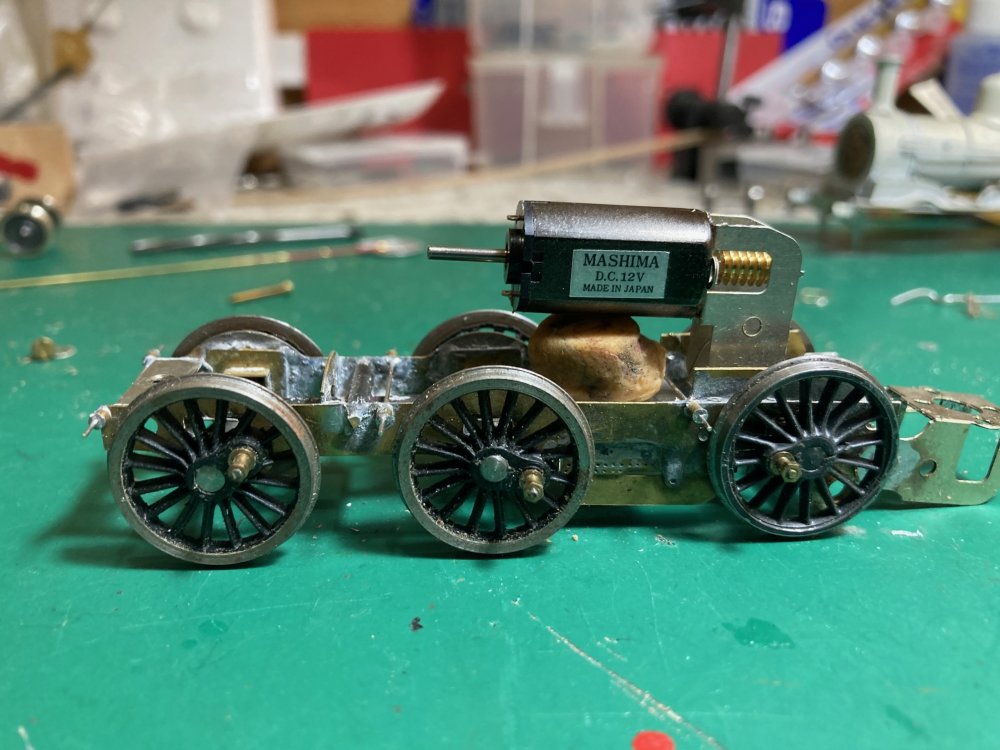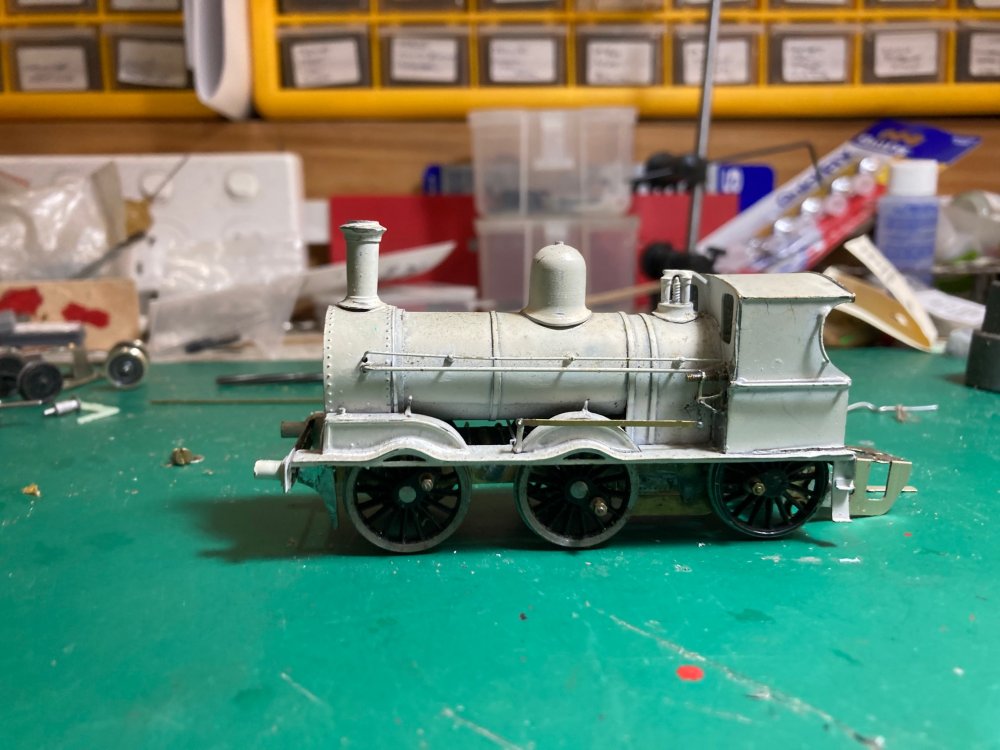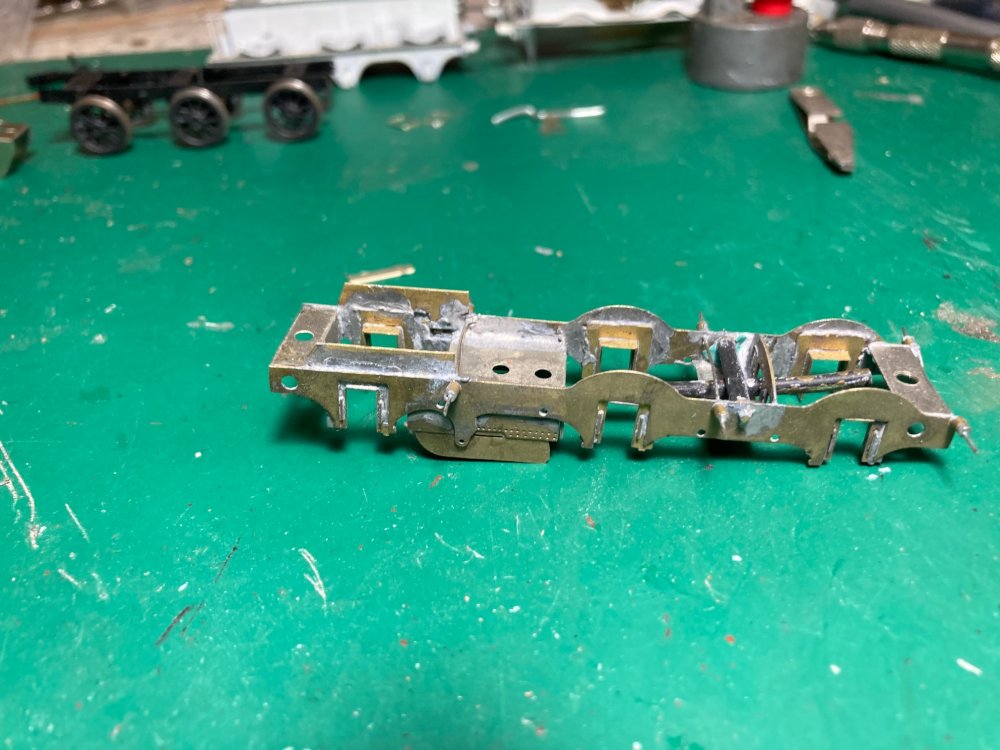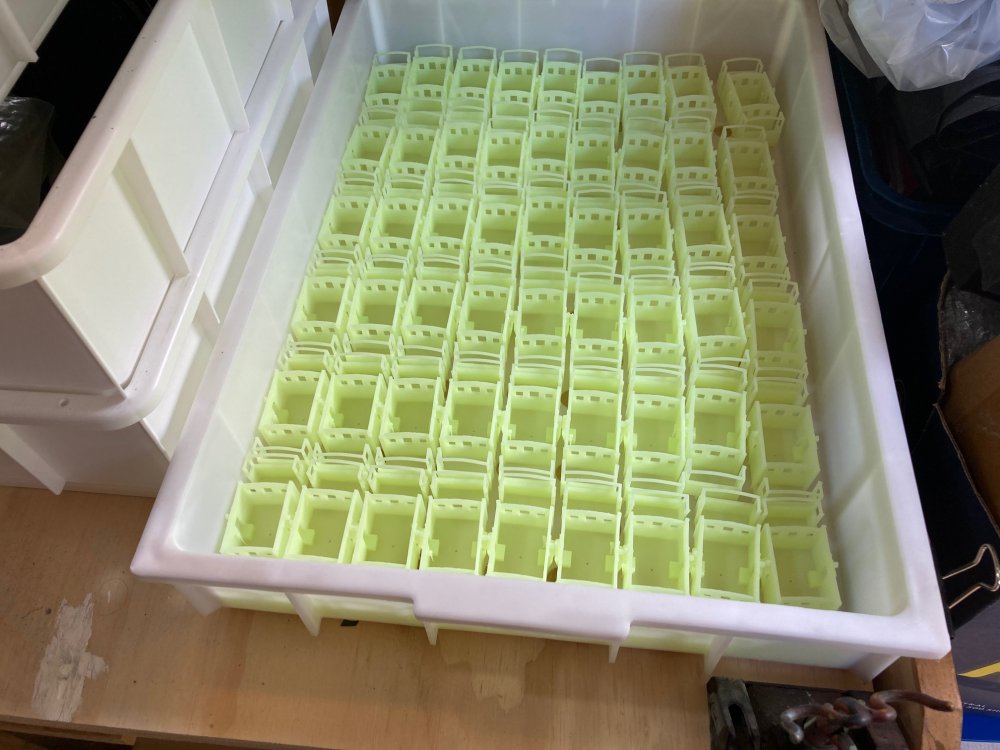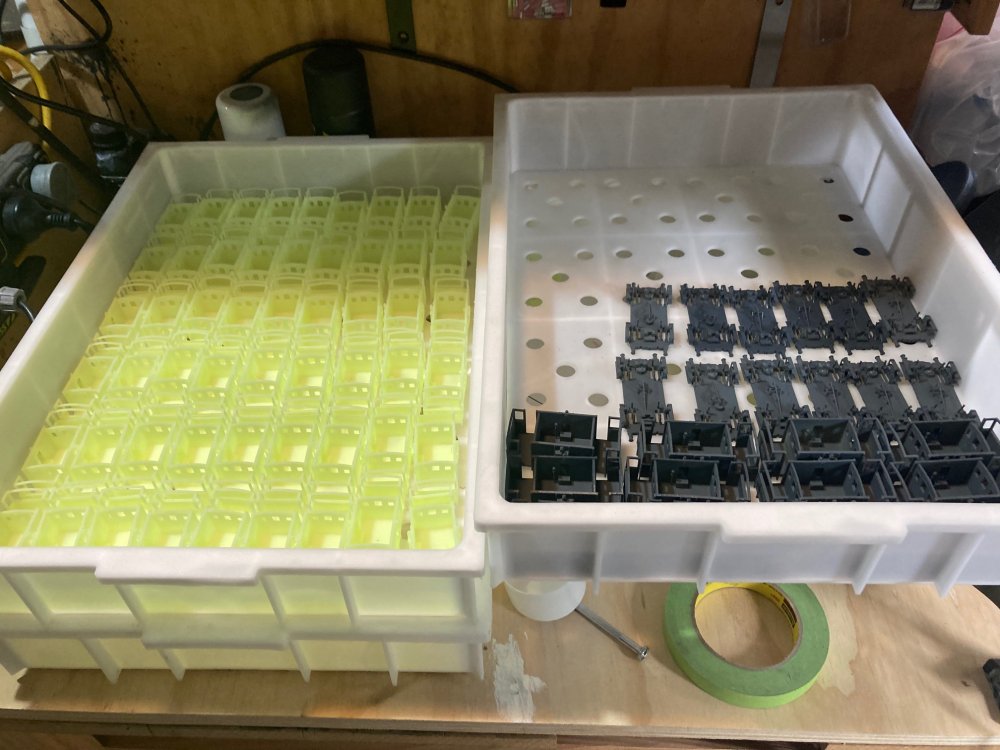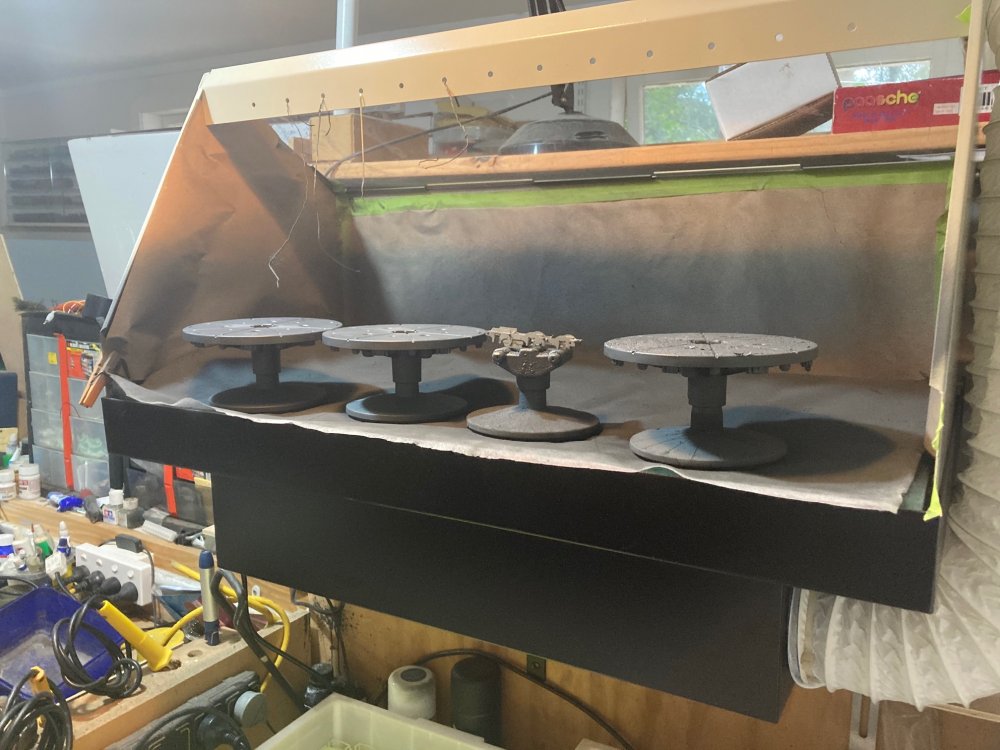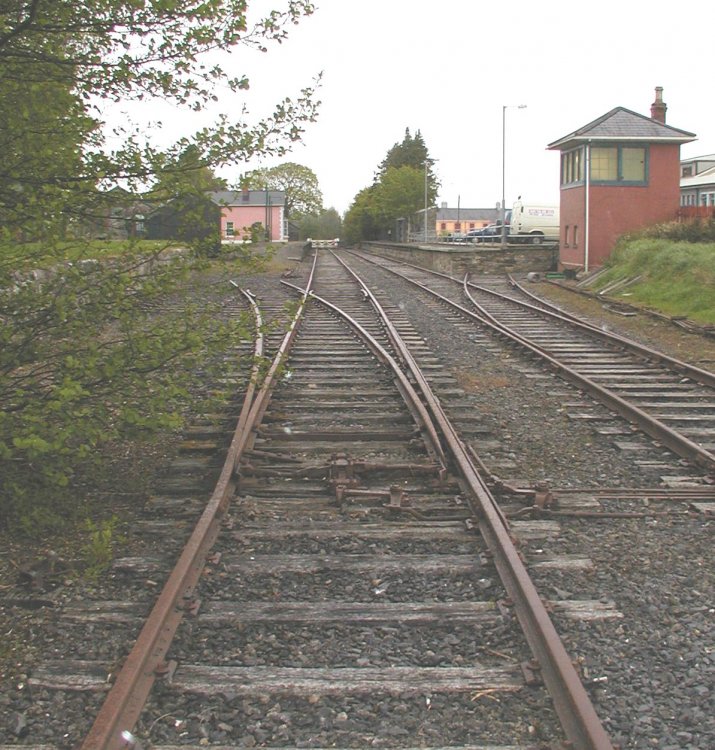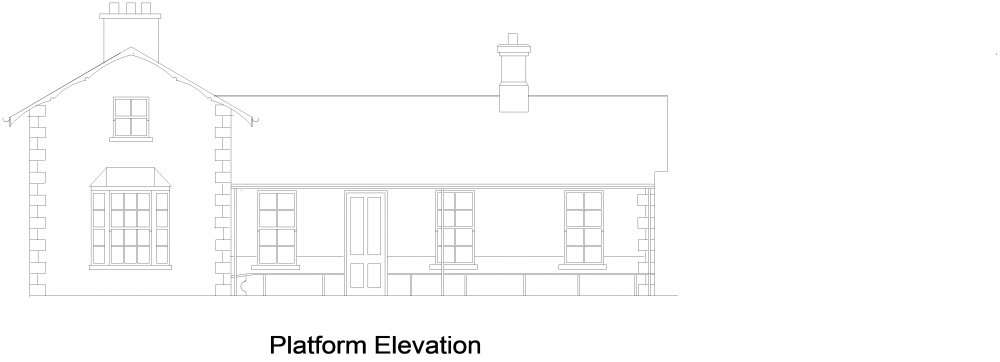-
Posts
4,877 -
Joined
-
Last visited
-
Days Won
119
Content Type
Profiles
Forums
Events
Gallery
Everything posted by Mayner
-
Its probably best to contact N-Drive Productions directly about their plans for the Backwoods Miniatures CDR & Irish 3' gauge models. The kits were designed in the early 90s and some re-design and new tooling may be required as some of the parts used to motorise the models (wheels, gears and motors) may no longer be available. While the standard of the castings and etched parts was quite good with parts fitting accurately using slot and tab construction, the locos and railcars were challenging to motorise mainly because few suitable components were available for OO9 and 12mm Gauge which my no longer be an issue if N-Drive develop suitable 12mm chassis. I have no direct experience of assembling a Backwoods Miniatures CDR loco, but I assembled one of the CDR articulated railcars, a pair of C&L 4-4-0T and several C&L wagons. The railcar was a smooth and reliable runner while I both C&L 4-4-0Ts required considerable work including new gearboxes and bogie modification to achieve reliable running.
-
On a more prosaic scale the Irish Government chartered a train to transport milk powder from Cork to Dublin when Dublin was "cut off" from the rest of the country by a blizzard during the early 80s. The main roads to the South and West were blocked by a blizzard and heavy snowfall in January 81 or 82 though CIE managed to keep the Cork line open. There was almost panic buying of food in Dublin with supplies from the rest of the country cut off. The milk powder appears to have been transported in two parcel vans rather than a Liner, things got back to normal within a week as roads were cleared/snow melted.
- 1 reply
-
- 1
-

-
Just to clarify the CE 4W Heating & Luggage, 4w Luggage & 4W PO Van/Tool Van will be supplied as complete kits except for adhesive/solder, paint and couplings. There is a 1984 photo of a 4w tool van at the rear of a Southbound track relaying train near Ballybrophy in Barry Carse's Irish Metrovick Book, interestingly the train is hauled by a double headed (2 drivers) pair of B201 Class locos.
-
Continuing on with the loco and tender brake gear assembly. The phosphor bronze wire through the hornboxes is to temproarily secure the bearings and wheel sets in position while I am testing the chassis for free running and fitting the brake gear. I set up the brake gear by first threading the inner brake pullrods onto the 0.45mm wire stretcher bars. I soldered the pullrods to the hangers before soldering the inner pullrods in place. I used card packers to make sure that there was adequate running clearance between the outer pullrods and the wheels in order to avoid a short. The inner pullrods should be closer to the wheels, I find it easier to line up the inner pull rods with the main frames useful when using OO/EMF wheel standards and running clearances. Completed brake gear, showing the misaligned pull rod on the leading driving axle which will need attention before painting and final assembly. The tender brake gear is similar but with a different brake hanger arrangement. The chassis was assembled by the original builder and incorporates the original machined brass frame spacers, I replaced the original S4 wheels and bearings and painted the chassis after I bought the loco about 20 years ago. The first job in the current re-build was to drill/clean out the pin holes for the brake pivot rods and spacers, I began using short pieces of small dia brass tube for setting up brake gear on brass kits during the 1990s and assembling the brake gear as a removable sub assembly. I used to cut the tube to length using a crude jig, but picked up a cutting jig from a visiting Australian model makers tool supplier which makes things a lot simpler. I bought a similar tool from Micromark in the US which was not really suitable for small scale modelling. The GSWR tender brake hanger arrangement is reasonably conventional, I used my usual assembly set up using a short piece of 0.45mm wire drilled into a piece of hardwood bolted to the workbench. Tender brake gear sub assemblies. I dropped a clanger on setting up the pullrods as they fouled on the wheel bearings and was unable to fit them outside the tender main frames. This turned out simple enough to amend in situ by lining up one of the pullrods with the inside of the frame on one side and gradually moving the opposite rod over by heating with the soldering iron. I fitted the outside rods again using card as packing pieces while soldering then trimmed the ends of the stretcher bars . Loco and tender with break gear fitted, the next major jobs are completing the cab interior, fabricating a loco tender drawbar, setting up a power connection between the loco and tender and general tidy up and complete loco detailing
- 58 replies
-
- 10
-

-

-

Brookhall Mill - A GNR(I) Micro Layout
Mayner replied to Patrick Davey's topic in Irish Model Layouts
It almost looks like the RPSI managed to save a short GN branch line and some suitable stock during the early 60s possibly with the help of the mill owners deep pockets and valuable linen traffic. Some of the U Class 4-4-0s survived possibly in blue until the Belfast Central line was severed in the mid 1960s, the U and UG classes were used for working excursions from the GN system to Bangor. -
A bit more progress on the "White Engine" I haven't decided on a number at this stage, though I will probably pick one of the saturated locos that was based at Tuam or Limerick that worked over the Burma Road. The mystery of the driving wheels sorted it self out when I found another set of Sharman driving wheels in the J15 bits and pieces box that matched the leading and driving wheelset in the photo in the last post. There must be a matching set somewhere for the wheels for the training axle. I fitted new matching hornblock bearings to all three axles, the bearings required minor fettling to slide up and down in the leading and center hornblocks the trailing axle is rigid with the bearings a push fit into the hornblocks. The compensation beam assembly and main frames and ashpan sides are the only remaining parts from the original chassis. I set the wheels up using a GW Wheelpress which also quarters the wheels on the axles and ran into a problem with the trailing and driving wheel set binding when I fitted the coupling rods. I swapped the rods with a set from another J15 and the problem disappeared, I set up the hornblocks on 3 J15 chassis at the same time and may have got the roads mixed up. I test fitted the body and completed some of the finer detail at this stage before tackling the brake gear and tender chassis. The wheels revolved without binding when I pushed the loco along the workbench and all 6 wheels were sitting on the workbench a very good sign! I fitted the cab spectacle plates and replaced the sandbox operating rod on the drivers side, but still need to fit lampirons and do something about the riveted strip between cab and footplate. The cab interior needs a lot of work the original builder cut off the section of firebox that projects into the cab, though luckily enough I have a spare cab backplate. I produced a set of etched J15 brake gear parts, the brake gear from the original kit was missing and its difficult to drill and fold the nickel silver brake gear parts from the SSM kit. The replacement brake gear parts are basically a 'blown up' brass version of the SSM brake gear. First challenge was to test the concept by assembling a driving brake hanger and shoe using an 0.5mm drill bit as its not practicable to etch an 0.5mm dia hole in o.4mm brass. Hanger & brake shoes drilled and pivots folded. Soldering the brake shoes to the hangers is extremely challenging without some form of jig or fixture. I threaded a piece of 0.45mm mire through the holes in the brake hanger and soldered at on end, leaving the other end free Crude but it does the job, I fixed a short piece of strip wood to a block of balsa as a stop, then pinned the brake hanger to the balsa with a short piece of 0.45 brass wire, then threaded the brake shoe in position before soldering. Assembled brake shoe and hanger before removing the ends of the pins and cleaning up. Brake show and hanger fitted to a Superheated a Chassis
-
The 001 Class appear to have been regularly rostered on Connolly-Rosslare services during early 1990s, travelled behind on in a MK2D set between Rosslare Harbour and Connolly in July 93. The 001 Class continued to be rostered on some of the lighter Intercity diagrams including a Heuston-Waterford diagram after the 071s & pairs of Bo Bos took over the heavier Intercity diagrams in the late 1970s
-
The marker lamps on Irish and British freight trains are really a hangover from the days of Block Signaling and loose coupled goods operation to indicate to the signal man that a goods train was complete and hadn't divided in section. American and Australasian railroads/railways use a radio end of train device (ETD) that allows the engineer/driver monitor the braking system and ensure the train is complete, some but not all EDTs incorporated a flashing tail light. Locally we had an interesting incident about 15 years ago when an overnight freight train on the Auckland-Wellington Main Trunk line divided as a result of a defective wagon coupling. The Locomotive Engineer (officially we don't use the term driver) stopped his train in response to a sudden drop in pressure walked back to what he thought was the end of the train and closed the valve on the brake hose thinking the EDT had dropped off, before reporting the issue and continuing his journey. Train Control in Wellington 480km (300miles) away became concerned when the track circuits continued to show the section occupied and alerted the engineer of a following train by radio who then found the remainder of the first train complete with EDT in his path.
- 21 replies
-
- 4
-

-

-

-
The thread originated around the feasibility of a Silver Fox style locomotive kit on a rtr donor chassis rather than a rtr steam engine. The main challenge facing a would be kit or rtr manufacturer of an Irish steam loco is the absence of readily available suitable generic rtr chassis like the old Tri-ang 0-6-0, L1 and B12 Chassis. It will be interesting to see whether OO Works will produce further Irish locos. While the OO Works J15 at £290 appears expensive compared to prices paid for similar Bachmann and Hornby models OO Works batch production costs are a lot higher and sales volumes infinitesimal compared to the larger companies and the 100 or so J15s produced would not have made much of a return for a year spent designing manufacturing and assembling the locomotives. OO Works appear to have sold approx. 100 each of the three Irish tender types and piggy-backed the CBSCR locos on the larger sales of the Beattie 0330 Saddle Tank which was available in main line, Colonel Stephens and Industrial variations. Interesting next seasons loco the LSWR Adams Jubilee is starting at a higher price point of £315 in LSWR or SR green and £298 in SR unlined black. I guess the questions boils down to the number of modellers would be prepared to pay £315+ for a rtr GNR S in Lined Blue or an NCC Castle in lined Crimson Lake livery or £300 for a large GSR 321 or 333 Class 4-4-0 in unlined GSR/CIE Grey or approx £100 less for a kit.
-
The GSR 820 Class 4-6-2T proposal with its medium power output larger bunker capacity seems ideal for the RPSIs profitable short haul work, otherwise a second WT would be a no-brainer. Going back to the original question the contemporary absence of a readily available rtr chassis like the Triang/Triang 0-6-0, 4-4-0 and B12 4-6-0 chassis is probably the greatest barrier to producing a OO gauge body-line kit for an Irish Steam loco. Most of the whitemetal steam locomotive kits produced by Bec, Gem and Wills were originally designed to fit contemporary Triang and Hornby classis. GEM and Wills began producing chassis for locos when no suitable rtr chassis was available. Wills re-tooled many of their kits including more accurate brass chassis in response to changing modeller expectations around detail and accuracy following the developed of etched and composite kits in the 80s. While the Bachmann Jinty, 3F and 4F were fairly close in wheelbase to the large GSWR J4 and J9 0-6-0 Classes obtaining a loco or chassis may be challenging as Bachmann appear to have discontinued the models, though the Bachmann LNER J72 appears similar in size to the ex-MGWR J26 tank locos but how many modellers would be prepared to pay over £100 for a donor loco/chassis plus up to £70-80 for an unpainted 3d printed body.
-
I suppose I am the most distant from Ireland in Hamilton, New Zealand another rail center with approx. 30 freight trains daily the junction between The Auckland-Wellington North Island Main Trunk Line & the East Coast Main Trunk to Tauranga and Kawerau. We live in Claudelands a 1920s suburb on the opposite side of the Waikato River to the CBD Trains are a bit shorter than the States at 30-40 bogie wagons and several level crossings in the suburbs/industrial areas.
-
As JHB indicated Worsley Works has produced scratchbuilders parts for Irish Coaches for the best part of 20 years, SSM have produced complete kits for GSWR, GSR & GNR coaches for a lot longer! The main advantage of the Worsley Works scratchbuilders parts is that its possible to blow the artwork up to a large scale or shrink the artwork to a smaller scale with minimal tooling cost compared to re-sizing a complete kit. I think the main reason that there are few photos or articles in this newsgroup on building coaches using Worsley Works parts is because of a perception among group members that scratchbuilding or assembling brass or metal kits is in the too hard basket with many people prepared to wait on the off chance that a manufacture will produce a rtr model than to take a chance and develop their skill as a modeller. Faced with an absence pf suitable rtr stock modellers such as Kirley & Colm Flanagan have produced excellent models of GNR, UTA & NIR stock using Worsley Works parts with rtr plastic donor bodies https://www.rmweb.co.uk/community/index.php?/topic/93496-kirleys-workbench/ A few CIE coaches assembled from Worsley Works parts about 10 years ago, assembly and finish was not the greatest but they pass muster as 'layout coaches". The main challenge was producing the roof as the proprietary roof mouldings/ extrusions were too narrow for an Irish coach and ended up cutting Comet roof extrusions length ways and filling the gap with filler, these days I would form the roof in sheet metal in a similar manner to the SSM coach roofs. I still need to sort out a set of correct Irish Commonwealth bogies Park Royal 64 Seat Laminate Open
-
According to Clements & McMahon (The Bible) the Bandon tanks had 3' bogie wheels 5'2" drivers. bogie wheelbase 6'+6'9"+6'3"+6'3". The B12 chassis looks reasonably close in terms of coupled wheelbase the main issue is the motor and driving wheel size and it would be simple enough to make a new bogie swing link from metal or 3D printing. It might be worth checking whether an X04 motor or a modern modern replacement will fit your chassis https://www.rmweb.co.uk/community/index.php?/topic/130573-alternative-motor-to-triang-x04/ These motors were originally fitted to the B12 and other Tri-ang/Tri-ang Hornby steam locos and may not be as tall as the motor motor in your B12 chassis. https://www.ebay.co.uk/itm/TRIANG-HORNBY-LNER-B12-LOCO-CHASSIS-ONLY-No-1-/133169865541 The best solution to sorting out the driving wheel problem would be to replace with Markits driving wheels as they are quite simple to set up but expensive, otherwise you could try replace the existing driving wheels with a set from a Hornby Jinty or 0-6-0 diesel but would be challenging to set up if the locos do not have keeper plate chassis that allow the complete wheel sets to drop out.
-
CIE did not run "mixed" trains as such on the Sligo line, but non-passenger coaching stock and "fitted" wagons was a regularly attached to Midland section passenger trains during the 1950s. There are a number of photos of Dublin-Sligo passenger trains in Anthony Burges book "Chasing the Flying Snail" (Colourpoint 2005) There is a Mar 1953 photo of a steam hauled 9:25 am Westland Row-Sligo at Longford and Dromod the train is hauled by 550 and ex MGWR "Celtic "Class 4-4-0 the train consist appears to be a post 1900 MGWR 6w main line Full Brake, an ex-MGWR Side Corridor Coach, two ex-GSR/GSWR Side Corridor Coaches and 3-4 Non-Passenger Coaching Stock or Fitted Vans. The author travelled on the footplate his main experience of the trip was the crews struggle to adequate maintain boiler pressure due to the poor standard of coal and briquettes supplied. There is a 1957 photo in the same album of A5 departing Dromad for Sligo with two coaches visible an ex-GSR/GSWR Side Corridor Coach and a CIE (Bredin) Side Corridor (possibly composite). 'Night Mail" trains were a feature of the Midland until the traffic was discontinued in the early 1990s I have a photo of the Night Mail being prepared in Sligo in the late 1950s. An ex MGWR 2-4-0 659 made up the train at Sligo with an A Class hauling the train to Mullingar to connect with the Galway-Dublin Night Mail The trains consist included. A Bulleid 4w H&LV and ex-MGWR 6e TPO dating from the 1880s (complete with mail pick up apparatus) , an ex-MGWR Meat/Fish Van & a Bulleid 4W Luggage van and possibly a CIE Bredin Side Corridor Coach and a string of fitted H vans. I have a photo of the "Night Mail" arriving at Ballysodare in the early 1960s behind B149. The train consisted of a Bullied 4w H&LV in the new Black & Tan Scheme and ex-GSR/GSWR side corridor and a GSR/GSWR bogie van both in the late 1950s CIE green scheme followed by a string of 4 H vans.
-
Two years later I finally found time to do some more work on these locos having almost completed the 52 Class test builds and 3 MGWR 2-4-0s. The first challenging was finding all the bits and found that I had used 193s motor and gearbox in a re-build of 2L and I had used the motors for the 2 new J15s in other projects. I thought it simplest to focus on 193 as I had most of the necessary bits to assemble the loco. I dismantled and re-built the original TMD chassis with new (my own) frame spacers and MJT frame spacers, due to dry joints in the original soldering and reinforced the frames above the cut outs for the rear hornblock, but re-used the original compensation beam and pivot. I was happy enough with the original tender chassis so no changes were needed. In a convoluted exchange 193 received the replacement High Level gearbox and Mashima 10X20 motor I bought for 2L and did not fit. The gearbox is the 'Slimline" version of the High Level "Roadrunner+" gearbox , but Chris supplied the incorrect standard width final drive gear and then sent another standard width gear as a replacement. I had dreaded machining the brass boss on the nylon final drive gear to fit the "Slimline" box as the heat of the machining was likely to melt the gear, In the end I reduce the width of the boss by clamping the gear and boss in the vice and slicing with a very fin piercing saw blade, which cut through the brass like a knife through butter. I had accidentally set the gearbox up for use in MGWR 2-4-0 with its higher pitched boiler, so I was unsure it would fit in a J15 with its low pitched boiler. But seems to fit comfortably. At wheels are Sharman at least two of the wheel sets were used in the 2002-3 re-build of the loco though the training painted wheelset may have come from another locos. Curiously only one of the wheelsets is fitted with axle brushes or bearings although all three wheelsets are set up with the "live axle" system I used on tender locos with the plastic centered wheels shorted on one side to the axle, its possible there is another wheelset with bearing in my J15 parts boxes. I grit blasted the mainframes using a Badger air abrasive gun with aluminium oxide blasting grit then primed with an etch primer before receiving a coat of GSR/CIE grey. The next job is to find/sort out the hornblock bearings and coupling rods before setting up wheels and gear box in the frames.
-
I thought it best to provide an update on our current projects in a single post. OO Gauge CIE 20T Goods Brake. The first batch production vans arrived from the printers and are currently working their way through the paint shop before going to the printers decals and lettering. This batch of bans will be produced in the as introduced late 1940s dark grey with snail and stencil lettering and is basically to test whether its viable to produce rtr wagons using 3D printing technology with finishing and assembly in house. We expect to set a price point and release the first batch of vans at some stage in June 2021 subject to the arrival of wheels from our supplier in the UK. Receiving inspection Work in progress 8 Apl Spray booth not quite a Chinese factory. D17/52 Class locomotive kit. Although the majority of the kits have been pre-sold a small number (2) are currently available at $290 NZ + shipping. The kit was largely feasible as a result of the assistance off Studio Scale Models who agreed to supply their J15 castings and GSWR 1804 gal tender and we are unlikely to re-release the full kit once the current batch is sold out. Although we have got the etchings and castings in stock the release of the kit is likely to be delayed until July/August as a number of small detail parts such as handrail knobs are currently out of stock with our suppliers in the UK. CIE Tin Van, Hooded Van and PO/Tool Van Kits. The cut off date for accepting orders on these kits is the 28 April for supply of the kits in August/September 2021. We will be proceeding with the release of these kits in August 2021 although a number of customers who placed expressions of interest have not confirmed their orders at this stage.
- 1 reply
-
- 8
-

-

-
Jonathan I picked up my ears at your 3'6" gauge interests. What gauge scale and gauge are you using for your SAR Models? New Zealand modellers tend to use S Scale on 16.5mm gauge (OO/HO) or 9mm on O Gauge for 3'6" gauge models, while Australian 3'6" modellers have been unable to agree a common gauge and scale with each state going its own way S on 16.5, OO & HO on 12mm used in different states. OO is closer to scale for Cape Gauge, than British standard gauge or Irish Broad Gauge.
-
After a gap of 20 years commuter trains are again running between Hamilton (similar populations to Cork City) and Auckland (similar pop to Dublin). The commercially operated Waikato Connection was discontinued in 2001 as a result of poor patronage and attempts to revive the service failed in 2008 as a result of political opposition to funding a passenger service, the region receiving $1 Billion to build a motorway instead. The main challenge facing the service is the lack of direct access to stations in central Auckland with passengers having to change trains at Papakura and use Auckland Transport electric suburban services as a result of a combination of pathing difficulties and poor co-operation between the regional bodies sponsoring the services. A bit like passengers from Drogheda and Dundalk having to change trains at Malahide and take the DART to Connolly and the city center. Its just about possible that the service may succeed despite having to change trains at Papakura as journey times in the morning and evening rush hour may be similar by road and rail as the motorways in the Auckland region are like carparks during the morning and evening peaks and driving the M50 feel like a quiet country drive. https://www.rnz.co.nz/news/national/439867/long-awaited-train-service-between-waikato-and-auckland-begins The locos used on the service is basically Kiwirails version of the Irish 071, the coaching stock re-builds or re-built ex BR MK2 D&E stock. The Government looked at high speed standard gauge rail with a $12B price tag rather than an upgrade and electrification of the existing 3'6" gauge line with tilting trains similar to Queensland, so it will be interesting if "Te Huia" survives the next general election.
-
- 4
-

-

-
The majority of the viewing public would not notice the difference between an ICR and a a C&L train of 1900. When I worked as guard on a UK heritage line a lot of our bread and butter non-enthusiasts could not tell the difference between a steam and a diesel loco, they both made smoke and a lot of noise. They enjoyed the ritual of travelling on an old style train at a leisurely speed looking at the scenery or just chatting, an escape from the hassle of every day commuting whether by car or public transport.
-
There is a photo of part of the Boat Train including the dining car 353 arriving in Cork from Cobh on p 11 of Irish Broad Gauge Carriages by Desmond Cookham. The train is in the new GSR Brown and Cream Livery most likely a Cobh-Kingsbridge "American Mail" with three through coaches for Rosslare Harbour. There is a diagram of the Dining car and other Rosslare express stock in Transport Associates GSWR carriage diagram book, I can scan a copy if you want. The J Mc Cartney Roberts and R N Clements albums in the IRRS flickr collection contain a lot of photos of pre-amalgamation stock, its worth joining the society for access to the photos without considering the other benefits.
-
Tony What locos are you using? Steam locos or diesels with pick up on all wheels is the only way you will achieve reliable running in N or any track power system for that matter. My track cleaning car https://www.modeltrainstuff.com/cmx-products-n-cmxn-clean-machine-track-cleaning-car-brass-includes-pad/ has a tank that I fill with isopropyl alcohol which I would run round the layout once or twice a month. Expensive but worth while on a layout with 10' main line 30 plus locos and over 100 freight cars
-
I have worked on and off in N Gauge for over 40 years both exhibition and private layouts and never experienced problems with poor running as a result of dirt an grime once I replaced my Lima locos with Minitrix, Graham Farish and Atlas in the early 1980s. I switched to American outline in the late 80s because of the superior detailing and running of the Kato and Atlas diesels and the much more realistic and reliable Microtrains knuckle couplers and never really looked back. Its possible that conditions in the room (temperature or humidity) may be a factor in the amount of dust and grime gathering, I never found a need for frequent track cleaning on exhibition or home layouts including a bedroom with carpets. I originally used a track cleaning rubber but bought a track cleaning car which I would run round the layout once or twice a month when I built a largish N gauge layout in the attic of a house in Dublin.
-

Ernies Massive Irish 1930's to 2005 Photo Archive
Mayner replied to Glenderg's topic in Photos & Videos of the Prototype
2L (Kathleen) is a real amalgam containing parts from 1L & 7L. Originally a "Main Line" loco with a similar cab to 3L (Lady Edith) she was re-built as a "Tramway" engine during the 1940s receiving 7Ls boiler, and superstructure, she received 1Ls boiler on her final visit to Inchacore in 1950s the last of the C&L 4-4-0s to receive an overhaul. -
The cabin is a standard GSWR design, the model is based on a survey of Kiltimagh carried out at various dates between 1982 & 2018! The lean to oil/lamp hut at Ballyglunin seems to have been a standard feature, there was a similar lean-to on the gable end of Kiltimagh cabin before the Burma Road closed in 1975.
-
Same seller has an OO Works J15 with a starting bid of £350.00 https://www.ebay.co.uk/itm/OO-Works-GSR-CIE-J15-101-class-0-6-0-Grey-Final-price-reduction/384069239033?hash=item596c4f80f9:g:mYgAAOSwwlVgTdNe
.png.c363cdf5c3fb7955cd92a55eb6dbbae0.png)


